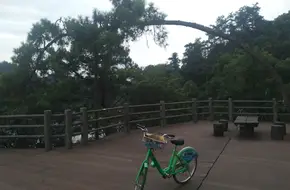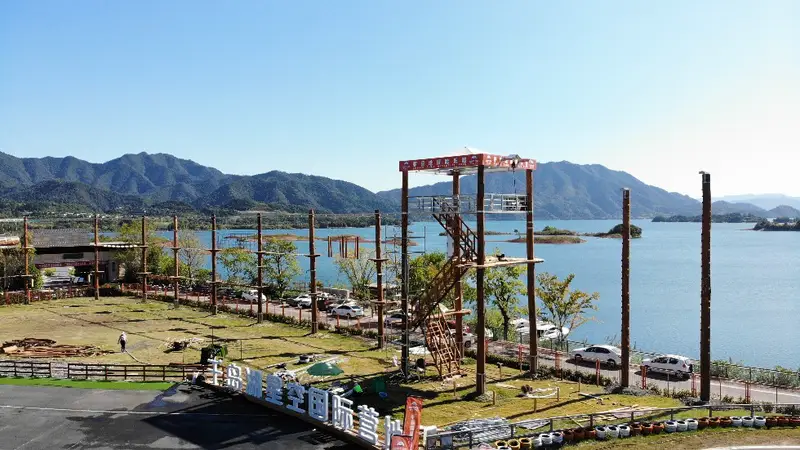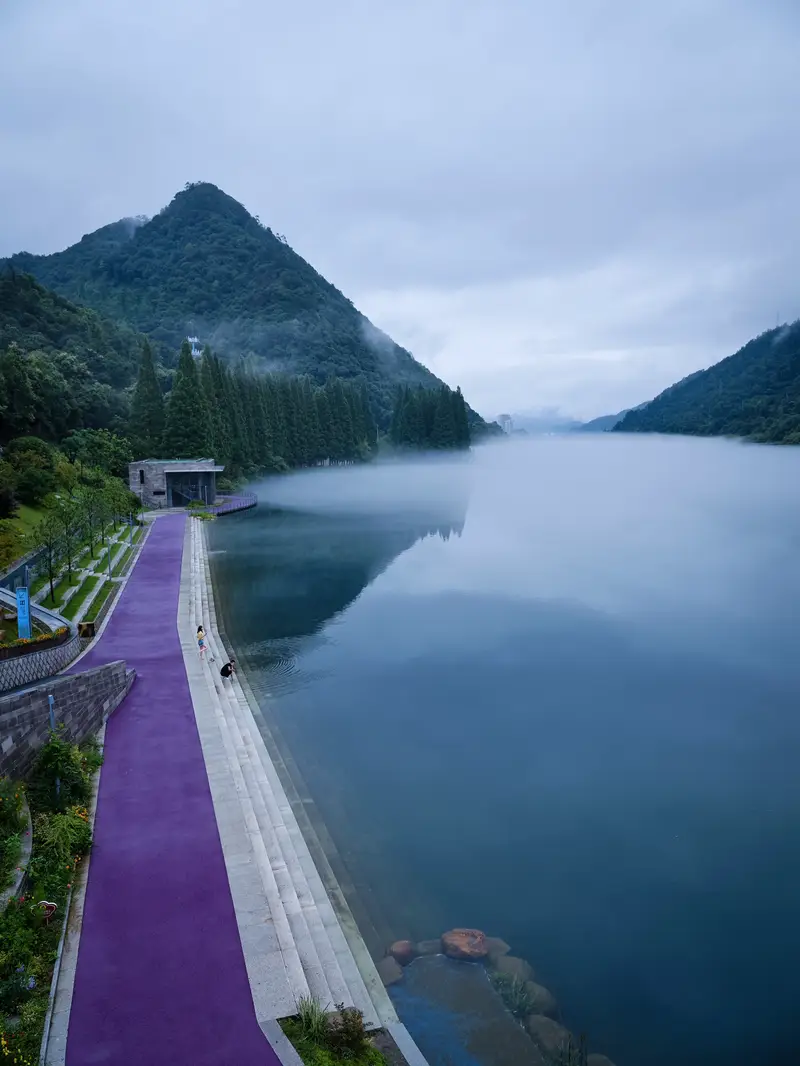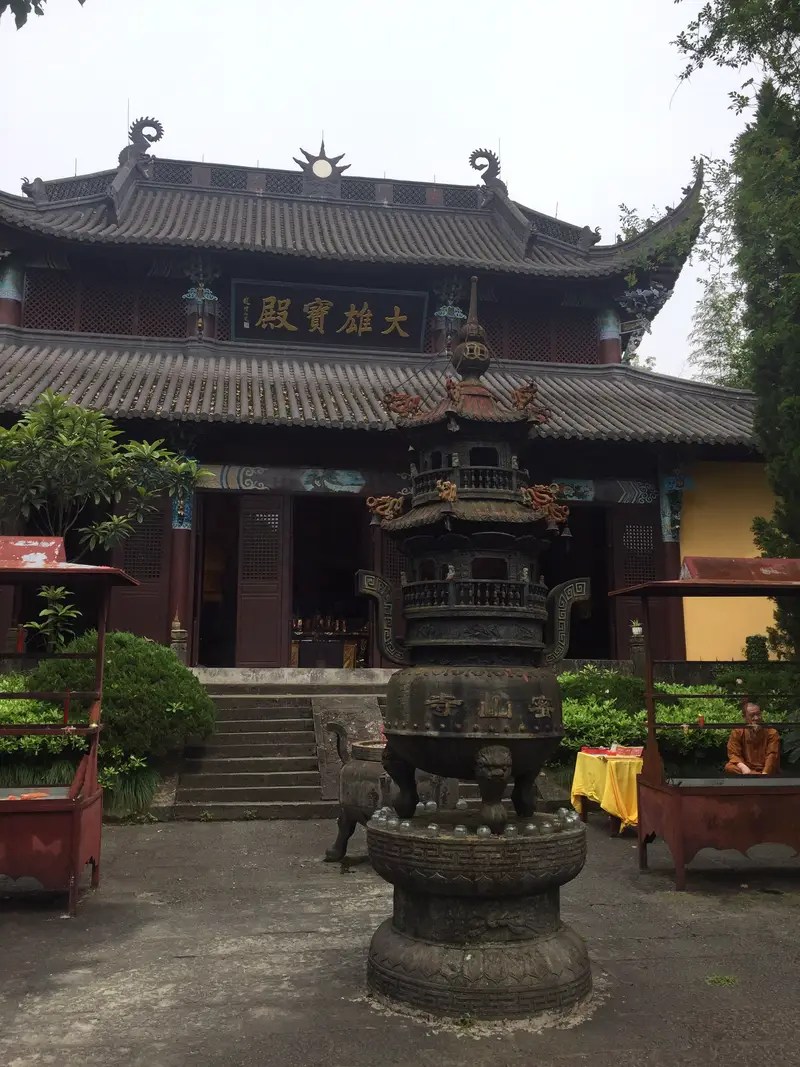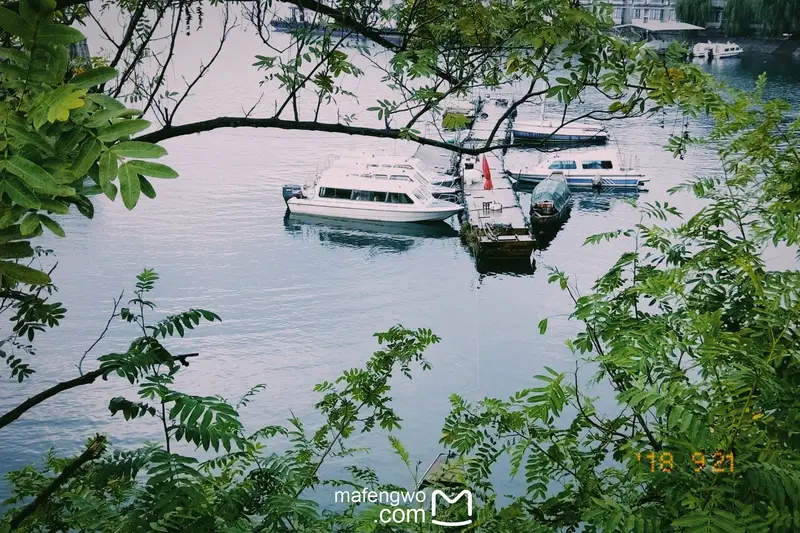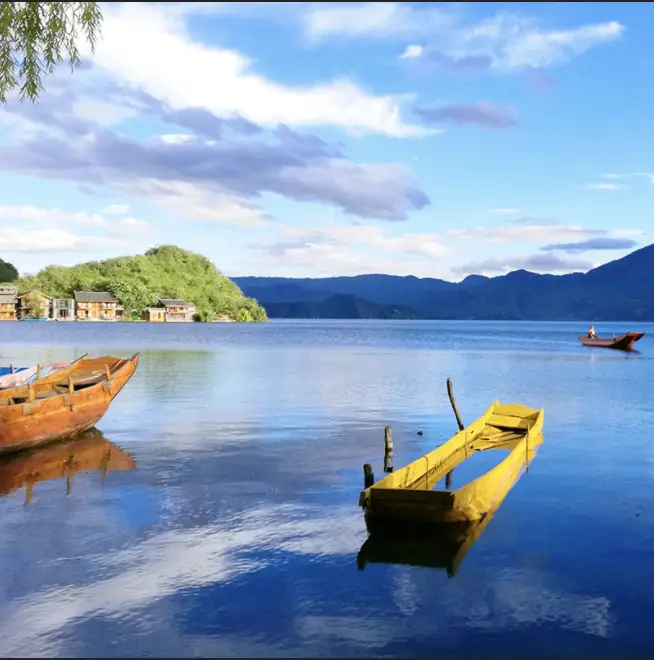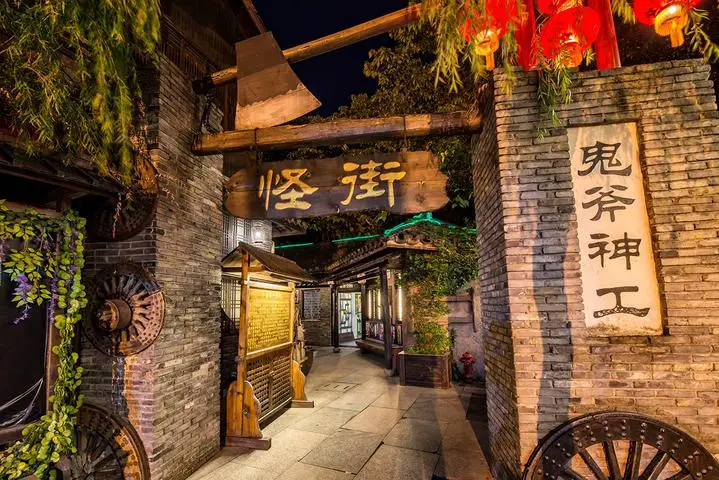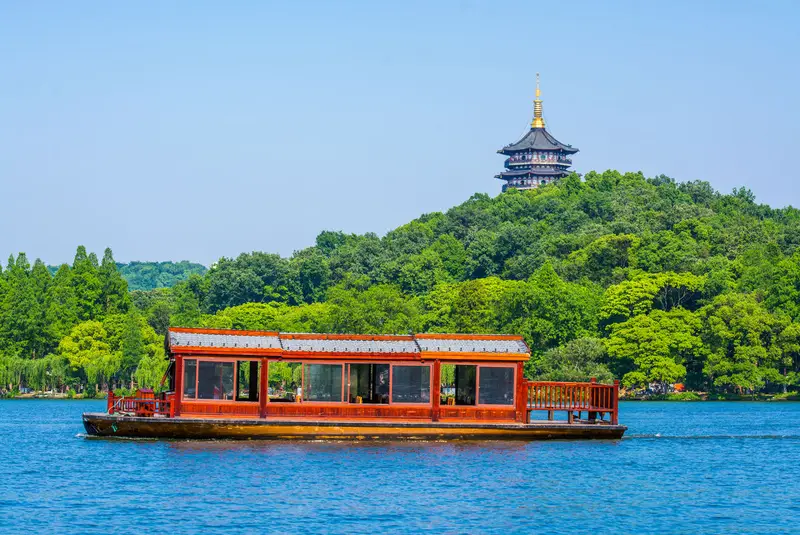Location & How to Get There
Shangjiangbu Bridge sits along Qiandao Lake’s scenic loop road in Chun’an County, Zhejiang Province. It’s part of the Thousand Islands Lake area, a region known for its crystal-clear waters and scattered islands. To reach it, drive about 2–3 hours from Hangzhou city center. The bridge connects Meihua Peninsula and Port Islands, making it a key spot to explore hidden gems like Tashan Peninsula and Baihu Islands. If you’re traveling from Hangzhou, take the Hanghui Expressway, then switch to local roads following signs for Qiandao Lake. Cyclists can rent bikes in town—the loop road around the lake is perfect for two-wheel adventures!
Natural Scenery: A New Perspective
Walking (or driving!) across Shangjiangbu Bridge feels like stepping into a postcard. The bridge offers panoramic views of Qiandao Lake’s iconic turquoise waters, framed by lush green hills. Unlike crowded viewpoints, here you get a bird’s-eye view of the lake’s 1,078 islands—some look like dragons, others like turtles, thanks to centuries of erosion. At sunrise, the mist rises over the water, creating a mystical scene. For photographers, evening light casts golden hues on the lake, making the bridge itself a striking subject. Don’t forget to wave at fishermen’s boats below—they’re a tiny part of this vast landscape!
Reviving Hidden Gems
Before Shangjiangbu Bridge opened, areas like Meihua Peninsula and Tashan Peninsula were rarely visited. Now, they’re waking up as tourist spots! On Meihua Peninsula, you’ll find quiet trails and lookouts where locals grow tea. Port Islands has tiny fishing villages with colorful boat houses. The bridge acts like a gateway to these half-forgotten corners, linking them to the main lake attractions. It’s like discovering a secret chapter of Qiandao Lake’s story—one that’s been waiting 50+ years to be told.
Cultural Touches & Local Vibes
Though Shangjiangbu Bridge is modern, it blends with the area’s laid-back charm. Nearby, you’ll spot traditional fishermen’s nets drying by the water and old stone docks. Some islands have tiny temples or pavilions where locals leave offerings. The bridge’s design—sleek and simple—doesn’t overshadow the natural beauty but adds a touch of human ingenuity. If you visit on a festival day, you might catch dragon-boat races or hear folk songs echoing across the lake.
Practical Tips: What to Expect
Shangjiangbu Bridge is easy to explore. There’s a wide walkway with railings (safe for kids!), and several photo stops with carved wooden signs. Parking is available near the bridge’s entrance, but get there early in peak season. You’ll find basic snack stands selling tea and local cakes, plus clean restrooms. For a full day, pair it with a boat tour to nearby islands. Bring sunscreen, comfy shoes, and a camera—you’ll want shots of the bridge arching over the lake, especially at sunset when the sky turns pink.
Why It’s Worth a Visit
Shangjiangbu Bridge isn’t just another checkpoint—it’s a launchpad for adventure. Whether you’re cycling across it, stopping to watch cormorant fishermen, or using it to hop between peninsulas, it changes how you see Qiandao Lake. The best part? It’s still uncrowded, so you can enjoy the lake’s tranquility without fighting tourists. Locals say the bridge has “eyes”—the way it seems to gaze over the water, connecting past and present. Come for the views, stay for the stories!




